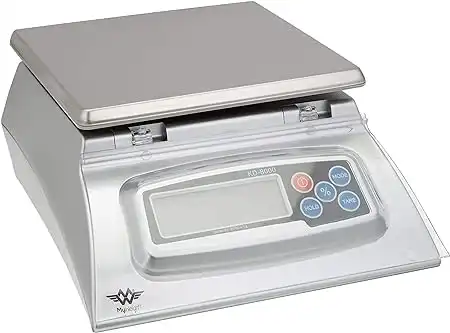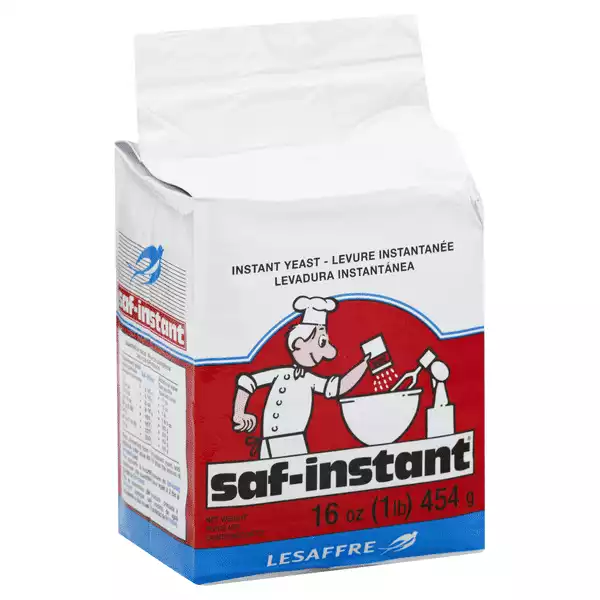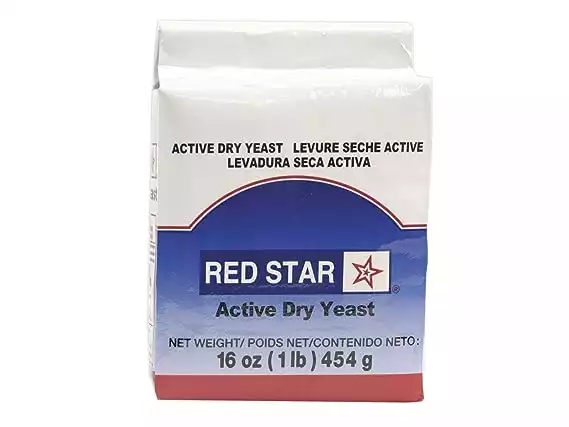How Much Yeast is in One Package?
Are you wondering how much yeast is in a packet? Easy!
Each yeast packet contains 2 ¼ teaspoons of yeast weighing 7 grams or around ¼ ounces, regardless of the type of yeast. This means that a packet of active dry yeast, an instant yeast packet, bread machine yeast, or a packet of rapid rise will all contain the same amount of yeast.
If you have done some baking, then you have encountered this microorganism. Yeast is beneficial in baking; this single-cell organism produces carbon dioxide gas that helps ensure the dough we are baking rises while poofing during the baking process.
But how much yeast do you need when you are baking? How much yeast is in an envelope?
Also, some things need clarification regarding the “wording” or baking terms used when people refer to a packet of yeast.
So let’s look a little deeper so we can tackle all of our yeast-related questions!
Let’s get right to it!
Here’s What You Will Find:
How Much Yeast is in a Packet
Let’s take a look at each question one at a time, including measuring yeast, substituting yeast, working with yeast, and much more!
Is a Package of Yeast the Same as a Packet of Yeast?
According to Red Star, a very common yeast brand in the United States, one yeast package contains a strip of three packets, sometimes called envelopes.
Accordingly, we will refer to yeast as a single packet.
How to Measure Yeast
Usually, yeast measuring is straightforward when the recipe calls for an envelope of yeast weighing 7 grams. If you have a jar of dry yeast, measure the required amount of yeast with a teaspoon or tablespoon. Or better yet, weigh it.
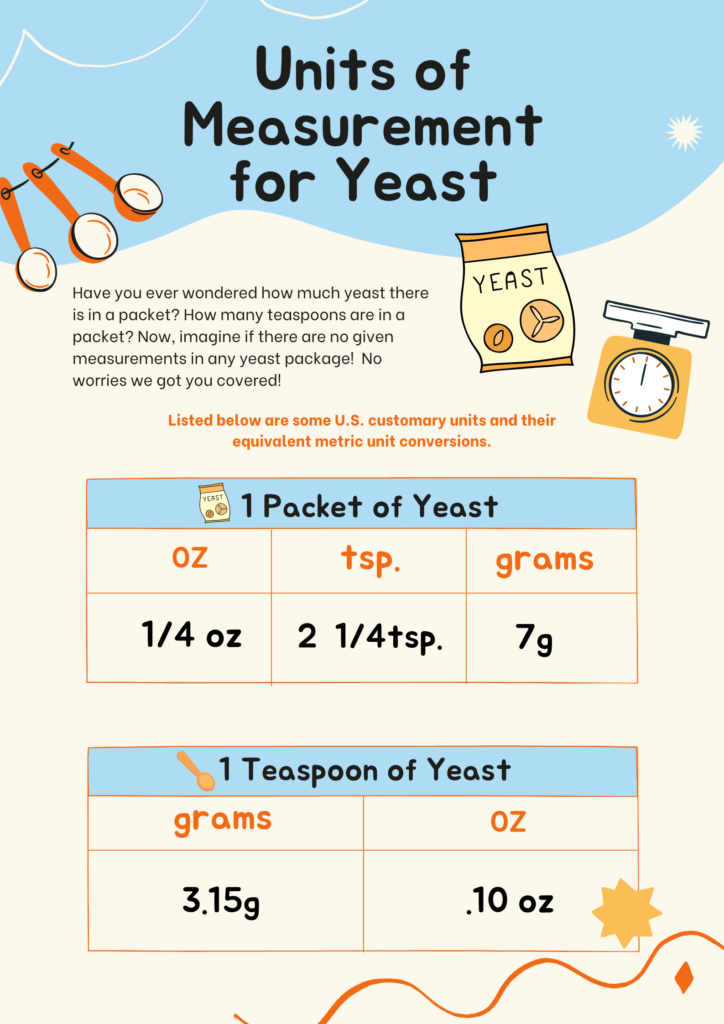
How Much Yeast Is In A Packet?
Just how much yeast is in a packet? Usually, a single packet of yeast contains ¼ ounces, equivalent to 2 ¼ teaspoons or seven grams of yeast.
When making pizza, baking bread, or certain cakes, recipes will call for a certain amount of yeast —but it may not be the type you have in the pantry.
Yeast comes in two forms: fresh, as compressed cakes or blocks, and dry, in the form of dehydrated granules.
Though it varies by recipe, most bread recipes, including pizza dough recipes, ask for one package of yeast or somewhat less.
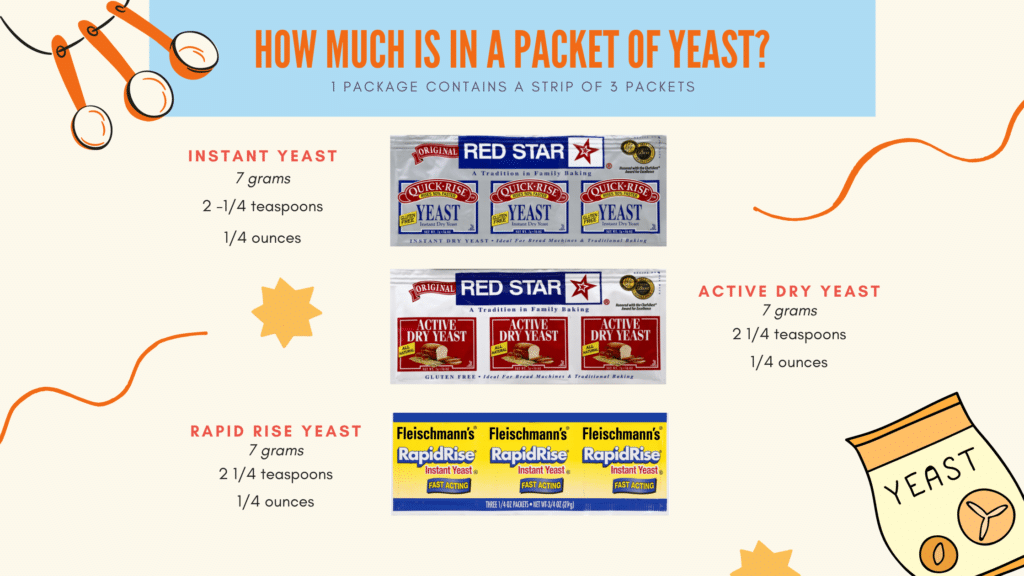
How Much Does A Teaspoon Of Yeast Weigh?
1 teaspoon of yeast converted in grams would weigh around 3.15 grams or .10 ounces.
How Much Is 1 Packet Of Dry Yeast In Grams?
One packet of dry yeast weighs around ¼ ounces and equals 2 ¼ teaspoons. In grams, one packet of dry yeast would weigh approximately 7 grams.
If you are into baking like us, you probably heard about Fleischmann’s yeast.
If not, let us refresh you!
Fleischmann’s yeast is a famous brand when it comes to yeast. It was founded in 1896, and the company still produces excellent food yeast products today!
When it comes to how much yeast is in Fleischmann’s yeast packet, it depends on what packet of yeast you are getting.
How Much Yeast Is In A Fleischmann Packet?
Fleischmann’s active dry yeast, instant yeast, rapid-rise yeast, and bread machine yeast packets are equivalent to 7 grams or ¼ ounces of yeast. When measured by teaspoon, that equals two and a quarter (2 1/4 tsp.).
How Many Tablespoons In A Packet Of Yeast?
Usually, the standard yeast packet would contain around 7 grams of 2 ¼ teaspoons of yeast. There would be .75 tablespoons (3/4 tbsp.) of yeast in the package, measured by a tablespoon.
How Many Teaspoons Are In A Packet Of Yeast?
1 packet of yeast would contain ¼ ounce of yeast. If we change this measure to teaspoons, 2 ¼ teaspoons of yeast would be in 1 packet.
How Much are 2 Packets of Yeast in Tablespoons
2 packets of yeast would contain 1/2 ounce or 14 grams of yeast. If we change this measure to tablespoons, there would be 1 1/2 tablespoons of yeast.
Single Packet of Yeast Conversions
Instant yeast can be replaced with Active Dry Yeast at a 1:1 ratio. Because active dry yeast takes longer to activate than quick or rapid yeast, your dough may take a little longer to rise.
Simply keep an eye on the dough as it rises and adjust the time accordingly.
One of the most common questions among home pizza bakers is whether to substitute active dry yeast with instant yeast. Are they interchangeable? The good news is that you can use a packet of instant yeast instead of one envelope of active dry yeast. They both contain 7g of yeast. The same works for fast-acting yeast. It is also sold in 7g packets and can be used instead of active dry yeast.
Check out the article on active dry vs instant yeast for more info.
How Much is 1 Packet of Active Dry Yeast to Instant Yeast
One single packet of active dry yeast contains the same amount as a single packet of instant yeast. The difference between active dry and instant is how fast the dough will rise. Instant dry yeast is faster than active dry yeast.
For other conversions, check the below chart:
1 Packet (Envelope) of Yeast is Equivalent to the following:
| Type of Yeast | Amount |
|---|---|
| Volume (Active Dry & Instant) | 2 1/4 tsp. |
| Weight (Active Dry & Instant) | 1/4 oz. or 7 grams |
| Fresh Yeast | 1 (0.6 oz.) cake or 1/3 of (2 oz.) cake Sourdough Starter 1 cup |
Can You Use Half a Packet of Yeast?
You can use half a packet of yeast and save the rest, but it would be best to weigh it so you know exactly how much yeast is in a packet you will use for your dough. The single packet contains 7g of yeast; to use half, weigh it until you have 3.5g of yeast.
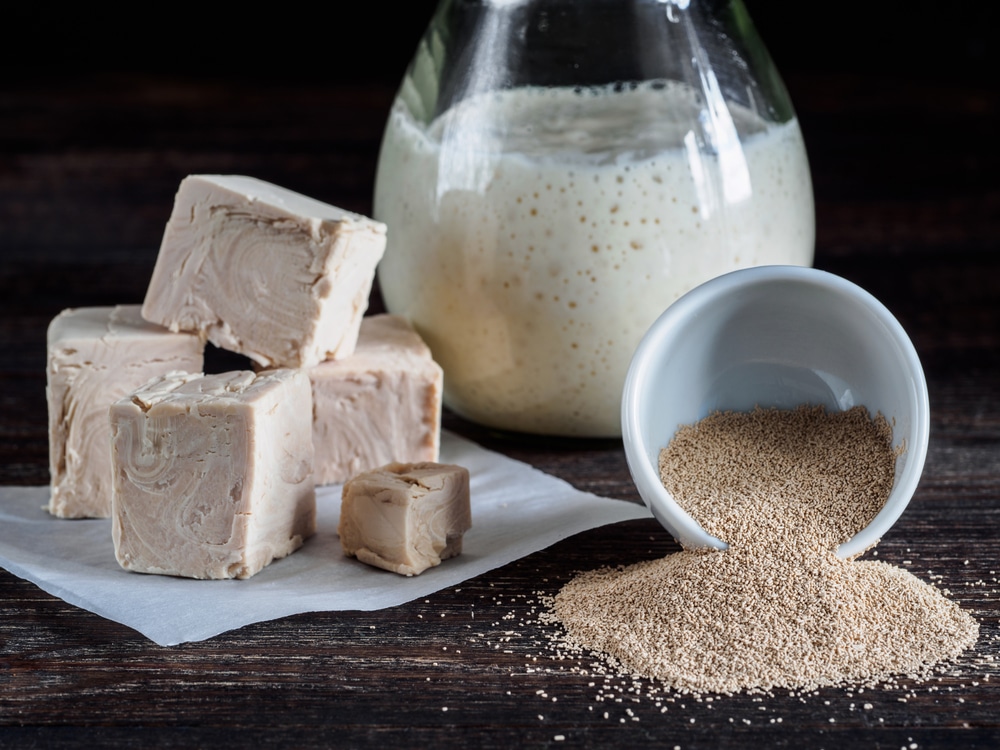
Using Yeast in Pizza Dough
There are multiple ways to use the best yeast for pizza dough when you have fun baking; now that we know how many measurements a yeast would generally have, let us tackle how to use yeast in our baking journey!
Can You Use Expired Yeast?
The expired yeast with lost potency will not work for rising dough. However, you can test it before discarding it.
Yeast and the Baker’s Percentage Method for Pizza
Since pizza flour does not contain yeast, maintaining the proper yeast-to-flour ratio is critical to making the best pizza. Yeast plays the second most crucial factor in pizza dough after flour.
If you are not an experienced pizza baker, we recommend that you do not alter the quantity of yeast called for in the recipe, and it is always best to weigh your ingredients. A scale is a must-have to become a pro-baker.
Here’s What the PROs at Homemade Pizza PRO Use and Recommend
The My Weigh KD8000 is a versatile Bakers Math Kitchen Scale with a large 8000g capacity and multiple weighing modes, including a percentage weighing function for precise baking. Its stainless steel platform is easy to clean, and the backlit weight display ensures easy reading. The hinged gunk shield adds convenience during messy applications—a must-have tool for accurate and consistent measurements in the kitchen.
In general, it is preferable to use less yeast and let it proof for a more extended period than add too much and proof it faster. More extended periods will result in a better structure and flavor.
When you add too much yeast to the dough, it produces a lot of gas in a short amount of time. This makes working with the dough difficult, inconsistent, and of lower quality.
Another problem that too much yeast might create is crumbling. So, to speed up the process of proving the dough, never add more yeast than the recipe asks for.
It is unquestionably preferable to wait longer to get a light and airy crust.
Using less yeast causes fewer issues than using more yeast. Using less yeast, as long as you don’t use an inadequate quantity, means you’ll have to wait longer for the dough to develop.
How Much Yeast for Pizza Dough?
You should use less than 1% of your flour for pizza dough. If the recipe calls for 500g of flour, you will need 5g of yeast. (500 * .01).
How Much Flour is for 1 Packet of Yeast
For a single packet of yeast that contains 7 grams of yeast, we recommend 700 grams of flour. That is 1% of your total amount of flour.
Remember, always weigh your ingredients!
How many packets of yeast do I need to make pizza?
The short answer is: it depends on the recipe. Most recipes will call for either one packet of active dry yeast or instant yeast (7 grams). You might need two packets if you want to make a large batch of pizza dough.
Dry Yeast & Fresh Yeast
There are two types of yeast for dry yeast: instant dry yeast, also known as bread machine yeast, and regular active dry yeast.
The main difference between these yeasts is their size and water content.
Instant Yeast
Instant yeast does not require poofing before use, unlike active dry yeast, which requires poofing thanks to its larger particles.
Taking note of the instant yeast’s expiration date is very handy. If you keep this yeast well stored and pay attention to its expiration date, you can add it to your ingredients.
However, you can test it if you are unsure if it’s still fresh or expired.
Blooming is a test that can help you determine if your yeast is still usable. Leaving the yeast in the liquid will create layers of foam. If it does, that will show that the yeast is alive and usable.
If you want instant yeast in baking, add it to the rest of the dry ingredients. There is no need to activate this type of yeast as it automatically activates when it encounters moisture.
If the yeast expires, it will probably die and won’t make your dough rise.
Here’s What the PROs at Homemade Pizza PRO Use and Recommend
SAF is easy to use (no proofing or pre-dissolving); it's fast-acting and long-lasting, continuing to work for hours longer than "rapid" yeast. It's absolutely reliable.
Active Dry Yeast
Although initially the same ingredient as Instant from earlier, unlike that one, active dry yeast would require proofing before you can use it for your baking adventure.
To prove this active yeast, take a ¼ cup of lukewarm water. You must also add a teaspoon of sugar; the amount will vary and depend on the yeast your bread recipe needs.
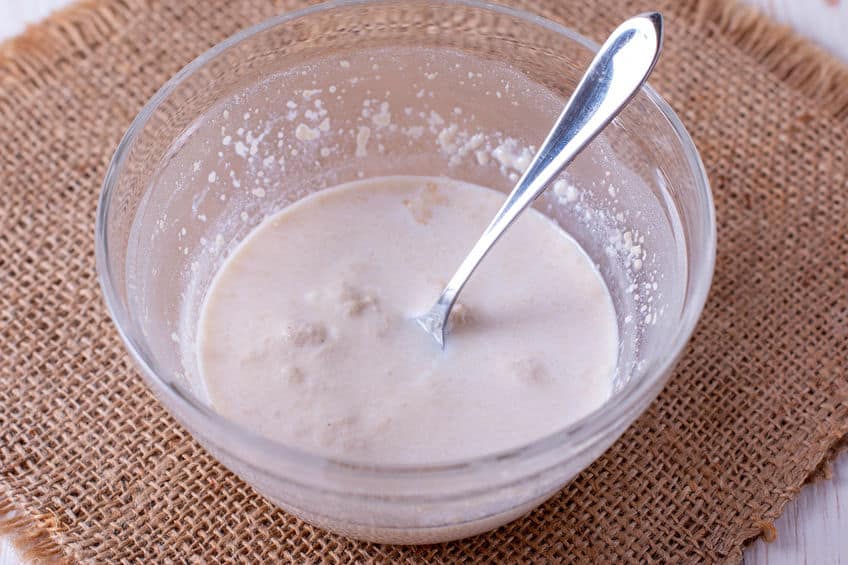
Mix this and allow it to sit for 5 to 10 minutes. It will start to foam if the yeast is still alive and usable. After this test, you can use the yeast for your pizza dough recipe.
Mixing the yeast into the pizza or bread dough helps break down starch into simple sugars. Once the yeast is mixed into the dough, the yeast cells ingest the sugars and convert them into ethanol and carbon dioxide (CO2).
Carbon dioxide and ethyl alcohol are then made, creating bubbles in the dough that helps it to rise.
Here’s What the PROs at Homemade PIzza PRO Use and Recommend
Red Star Active Dry Yeast is a trusted choice among bakers. It's known for its consistent performance, balanced fermentation speed, and subtly nuanced flavors it brings to pizza dough, contributing to a well-rounded and delicious crust.
Fresh Yeast
Fresh yeast is also called cake yeast or compressed yeast. It comes in block form, not tiny granules.
Fresh yeast doesn’t last as long and should always be kept in the refrigerator. Cake yeast or fresh yeast has a stronger flavor and is popular among professional bakers.

Experienced bakers often use fresh yeast. Unlike the other 2, fresh yeast has a shorter shelf life. It is vital to keep track of its freshness when using fresh yeast. If the smell is off and there are dark spots around, discard it immediately.
These will appear in solid chunks. Crumble these with a spoon when you use them for a delicious bread recipe. Like active dry, fresh yeast will need proofing to see if it is still new and usable.
You will need to make a ¼ cup of warm water, mix it with the yeast and let it sit for 5 to 10 minutes. If it foams and bubbles, the yeast is still alive, and you can add it to your other ingredients.
Quick Tips on Using and Activating Yeast
- Yeast – Use the correct yeast for your application. You can use instant, active, dry, or fresh yeast for pizza. However, RapidRise is different than instant yeast because it’s a fast rising yeast, and it works for recipes that require one quick rise, like quick-rise bread. Rapid-rise yeast is not recommended for pizza.
- Water Temperature – Lukewarm water is required to activate the yeast from 95 to 105F. Suppose you don’t have a thermometer; simply warm enough to feel comfortable. After adding the water, allow for a minute or two, and whisk with a fork until smooth.
- Add Sugar – It is best to add a little sugar when activating the yeast. The yeast will immediately start feeding on the sugar and making tiny bubbles which is a sign that the yeast is alive.
- Room Temperature – Yeast needs a temperature of 75 to 80F to activate; if your kitchen is colder, you may place the dough in a switched-off oven. A cool oven might be the solution if your home is too hot. Avoid exposing the dough to temperatures below 50F since this will cause the yeast to fall dormant and not activate.
For more, check out our yeast tips.
How To Store Yeast
Storing yeast is simple and effective as long as it’s done correctly.
How Should I Store Leftover Yeast?
Yeast packets can be kept in an airtight container at room temperature or in a cool area with minimal temperature fluctuations for 12 to 18 months as long as they stay dry. You can usually expect it to do its job for 2 to 4 months after the “best buy” date on the package.
Keep packets of unopened yeast in a cool, dry, dark place. Ensure it is away from sunlight, which could get hot.
Here are our favorite airtight containers to store yeast.
Twist Top Deli Containers Clear bottom With blue Top Twist on Lids Reusable, Stackable, Food Storage Freezer Container. Great for on The Go - EZ Clean - Stackable - Microwave Safe - Dishwasher Safe.
It is essential to store your yeast safely, which can be stored inside a pantry or a cabinet. Yeast can also be refrigerated for at least two years! Now that is a long shelf life!
Although opened yeasts are best kept inside refrigerators with a 4 to 6 months shelf life, you can freeze yeast for up to 2 yrs.
Yes, you can also freeze yeast to prolong its shelf life. It will stay good in the freezer for up to 2 years. Not sure if your yeast is still good? First, check the expiration date on the packet or jar. Test it by stirring together one packet of yeast with 1/4 cup of water and 1 teaspoon of sugar.
Can You Use Yeast Instead of Baking Powder?
Yeast and baking powder are both leavening agents, but they work in different ways and are typically used in different types of baked goods.
Yeast is a live microorganism that ferments the sugars in the dough, producing carbon dioxide and alcohol. This process takes longer than chemical leavening but creates a more complex flavor and airy texture.
Yeast is typically used in bread and other yeast-leavened baked goods.
Baking powder is a chemical leavening agent that releases carbon dioxide when it comes into contact with moisture and heat.
Baking powder is typically used in baked goods that don’t require a long fermentation process, such as cakes, cookies, and quick breads.
Therefore, you can’t replace yeast with baking powder and vice versa since they are not interchangeable regarding the type of baked goods, the quantity needed, and the chemical reactions.
Additional Yeast Resources
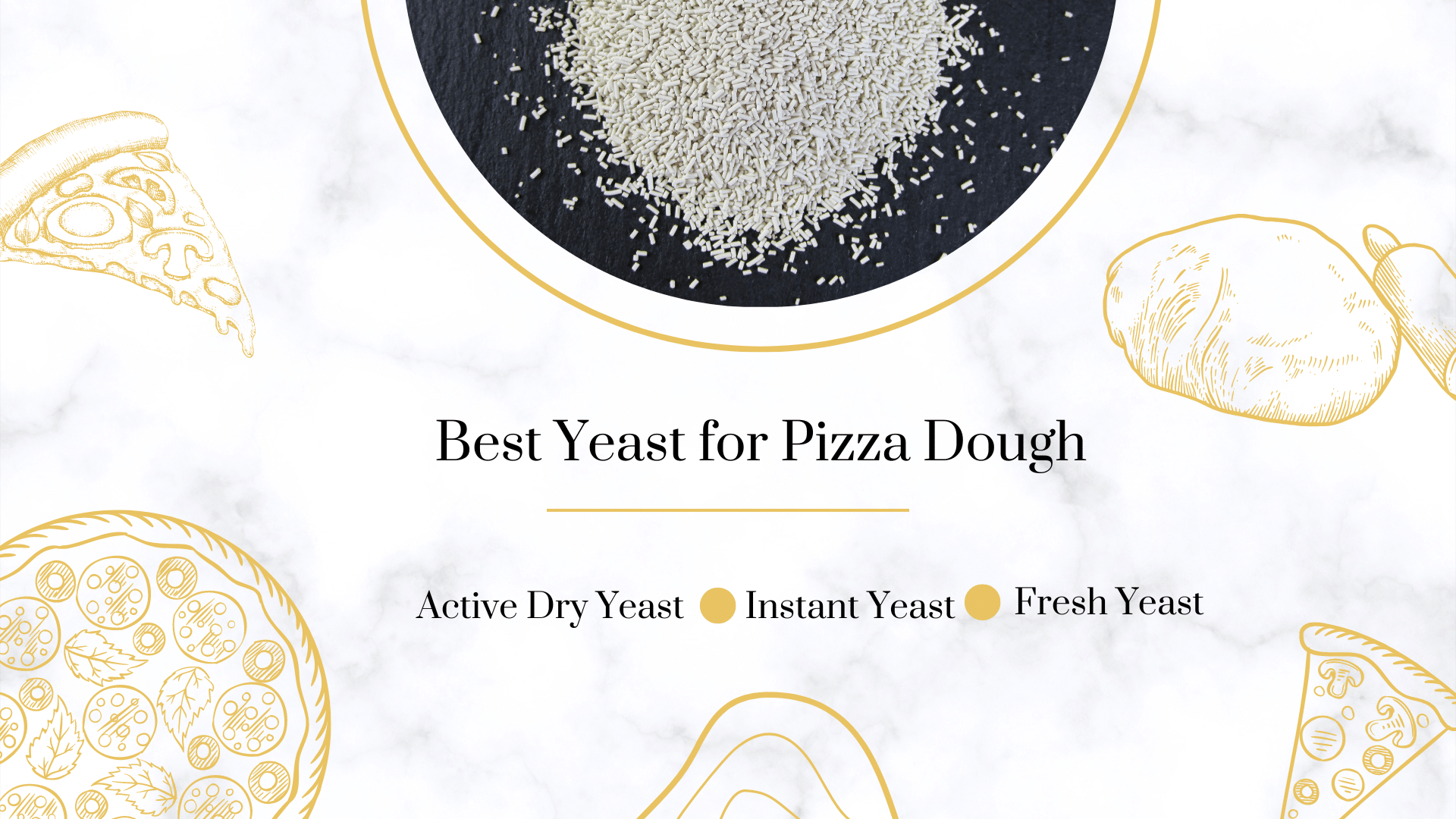
Best Yeast for Pizza Dough: Mastering the Art of Pizza Making
the PROs
What is the Best Yeast for Pizza Dough? Pizza – merely mentioning this delicious dish is enough to stir cravings. …

10 Amazing Yeast Tips for Pizza Dough You Need to Master
the PROs
Pizza Dough Yeast Tips Are you looking for some pizza dough yeast tips? We’ve got plenty of information for you! …
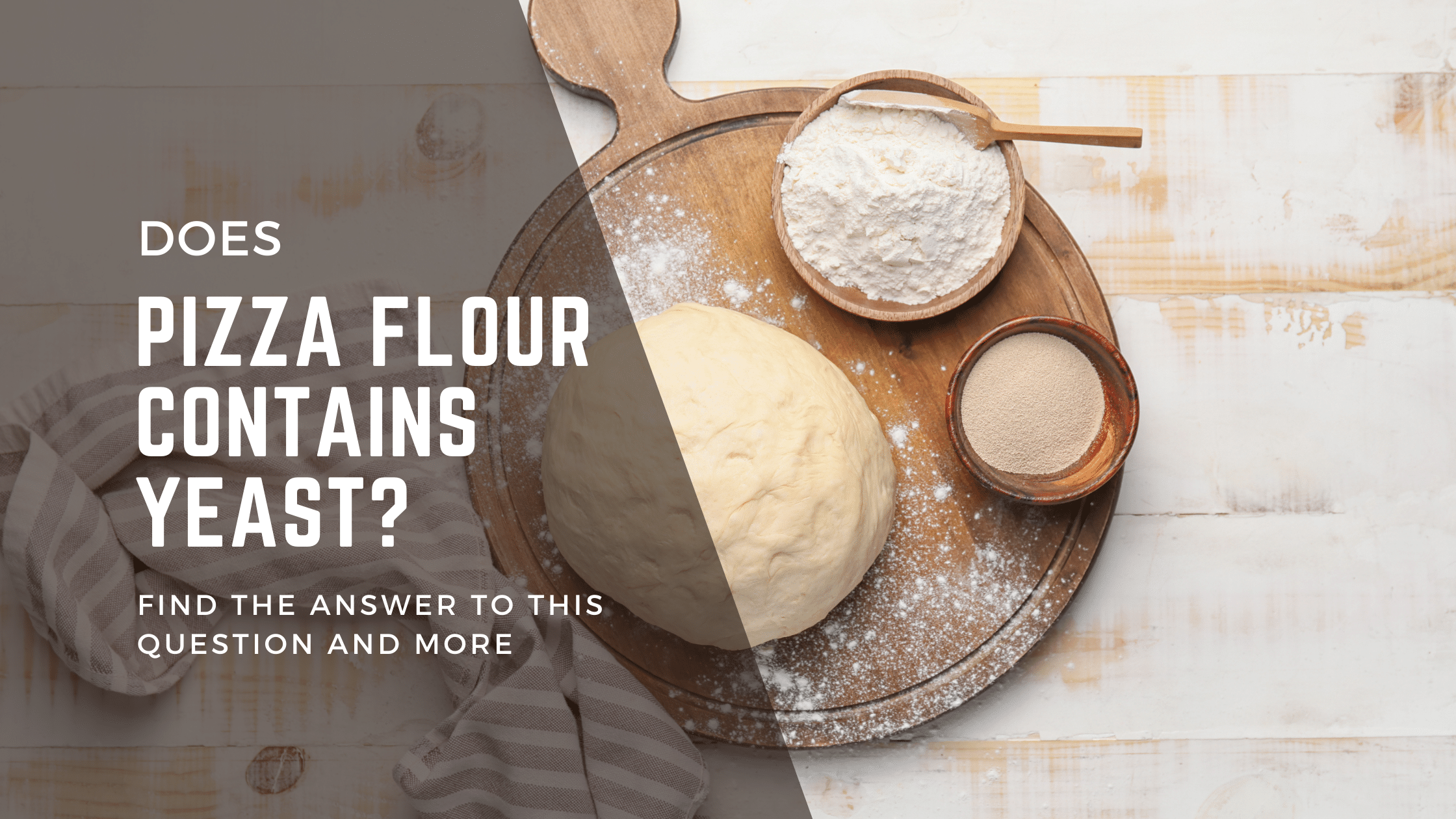
Does Pizza Flour Contain Yeast? Find What You Need to Know
the PROs
Ever wonder what gives pizza its mouth-watering, fluffy, and crisp crust? It’s all about the magic happening behind the scenes …
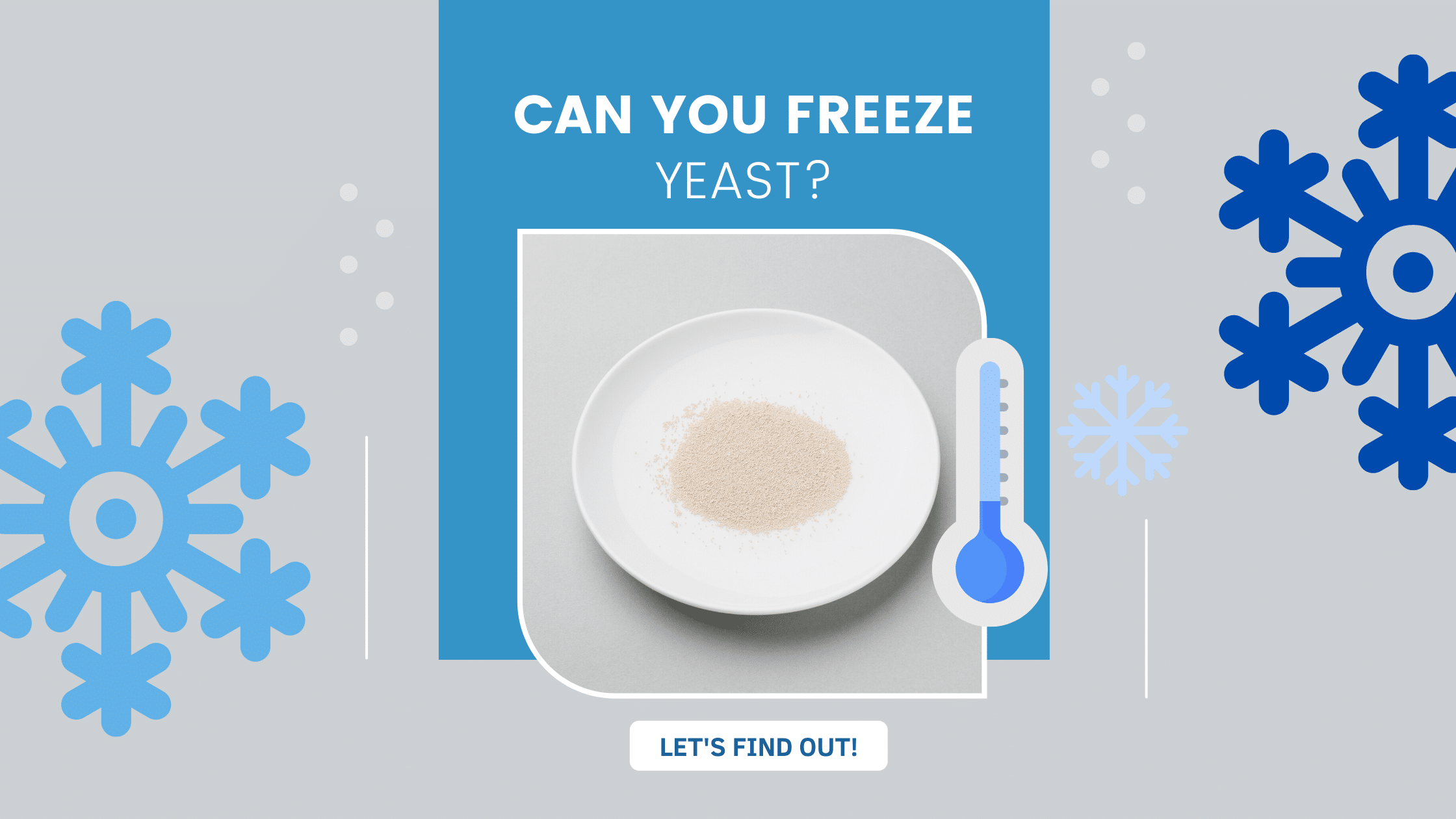
Can You Freeze Yeast? Find Everything You Need to Know
the PROs
“Can you freeze yeast?” – this question has crossed many home bakers’ minds. If you’ve been puzzled by this too, …
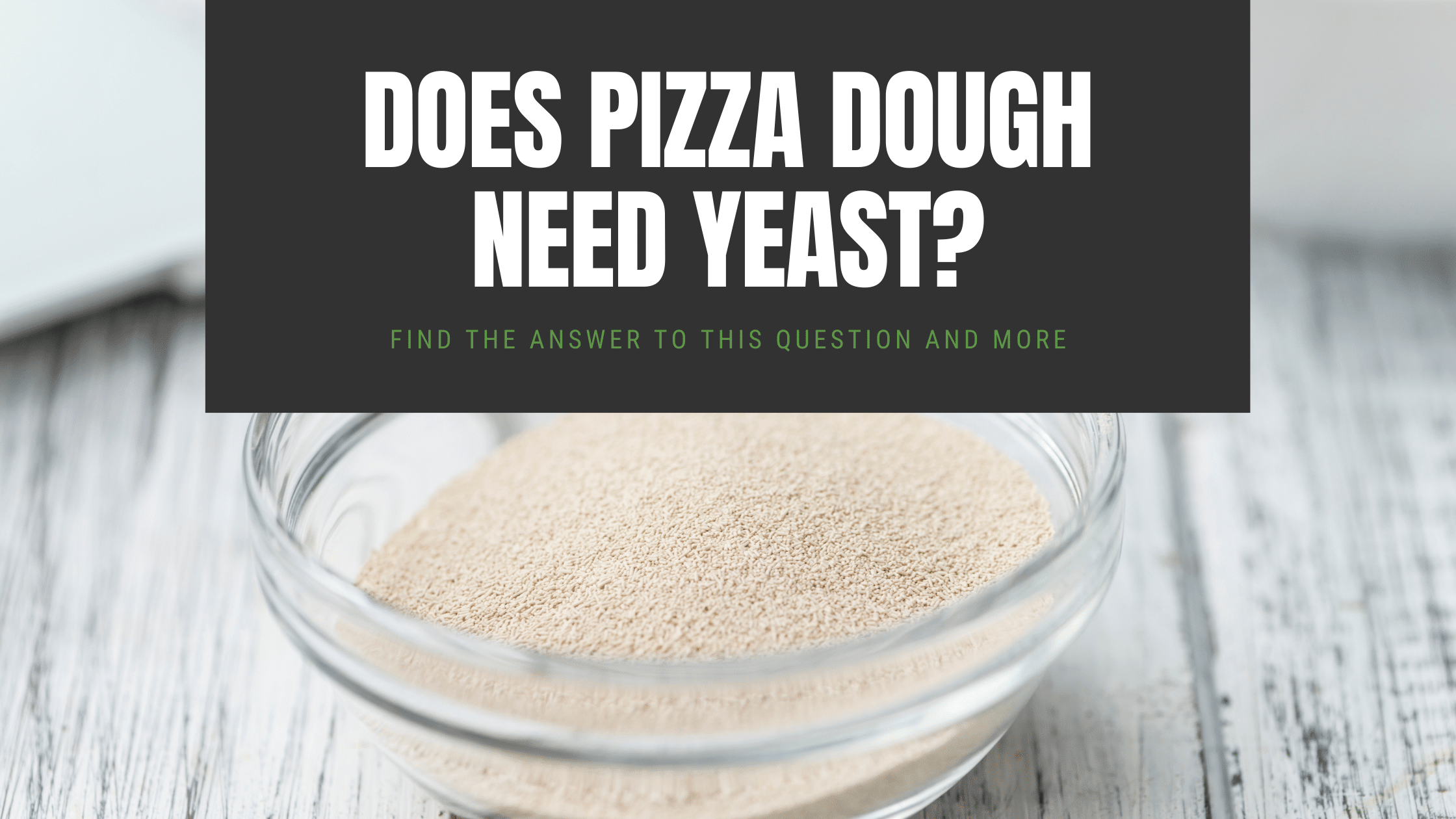
Does Pizza Need Yeast? You Bet! Here’s What You Need to Know
the PROs
Does Pizza Need Yeast? As a home baker, you might ask yourself if pizza needs yeast. Maybe you are feeling …

Active Dry vs Instant: Which is the Best Yeast for Pizza?
the PROs
In this article, we will help you understand the difference between Active dry yeast and Instant and let you know which one is right for homemade pizza. Find which is the best yeast for pizza and why.

Yeast for Pizza Dough: Your Key to Creating Irresistible, Airy, and Flavorful Crust”
the PROs
Most certainly, you read about yeast before or at least have seen the various yeast packets at the supermarket, not knowing the difference between them.
The Last Slice
Active dry and instant yeast will be your go-to yeasts when making pizza dough or making bread, as they are accessible in any baking aisle, easy to use, and generally interchangeable.
Now that you know everything you need to know about how much yeast is in a packet and the measurements to use the yeast, are you ready to start your baking journey?
Are you aiming to be the best pizza baker in the universe?
Well, have at it and start your yeast-baking journey today!
Enjoy!
Not a PRO? Not a Problem!
Take a pizza class to bring your pizza skills to the next level,
so you can be a PRO!
Related Posts

Costco Pizza Delivery: Find How You Can Get It Now!
the PROs
People go to Costco’s food court for many different reasons, but the cheesy slice of pizza they serve is among …

Pizza for Beginners: Don’t Buy Pizza, Make It! Here’s How to Get Started!
the PROs
You have this idea that you want to make pizza at home as opposed to ordering it, but where do you start? Don’t worry! Here you will find answers and directions to all your questions.

Pizza Toppings Under Cheese or Over Cheese? [Why the Order Matters]
the PROs
Is Pizza Cheese on Top or Bottom? Hey pizza lovers, are you wondering if you should layer pizza toppings under …
Newsletter
Subscribe to our Recipe of the Week newsletter and receive our partners’ latest recipes, tips, and discount offers.
Keep in Touch!

